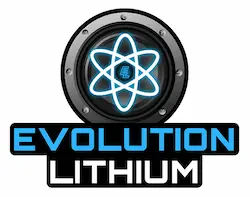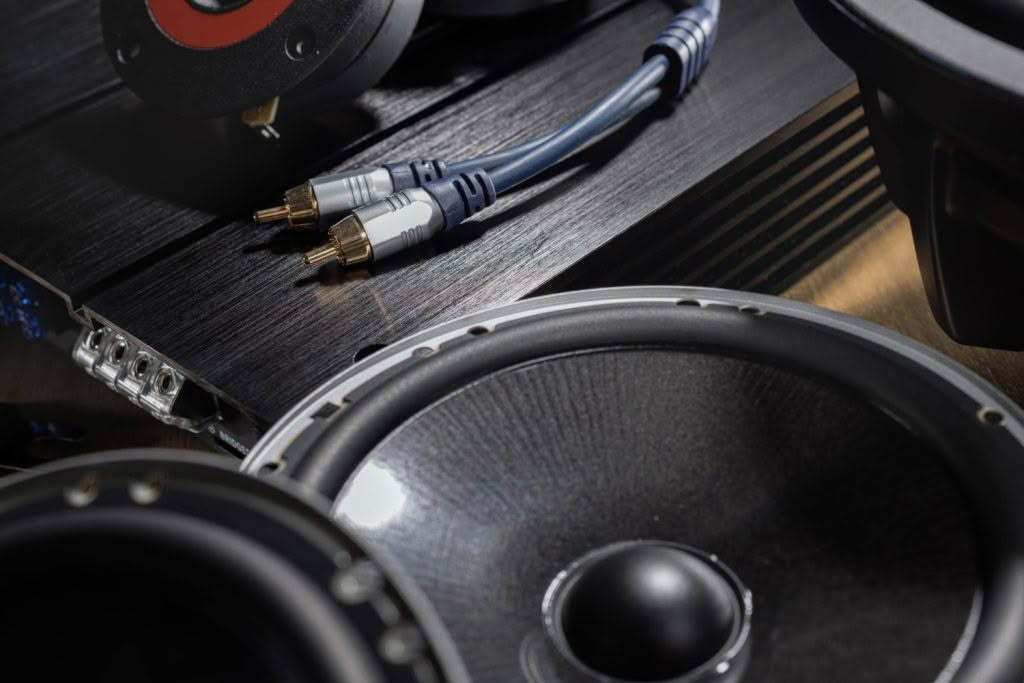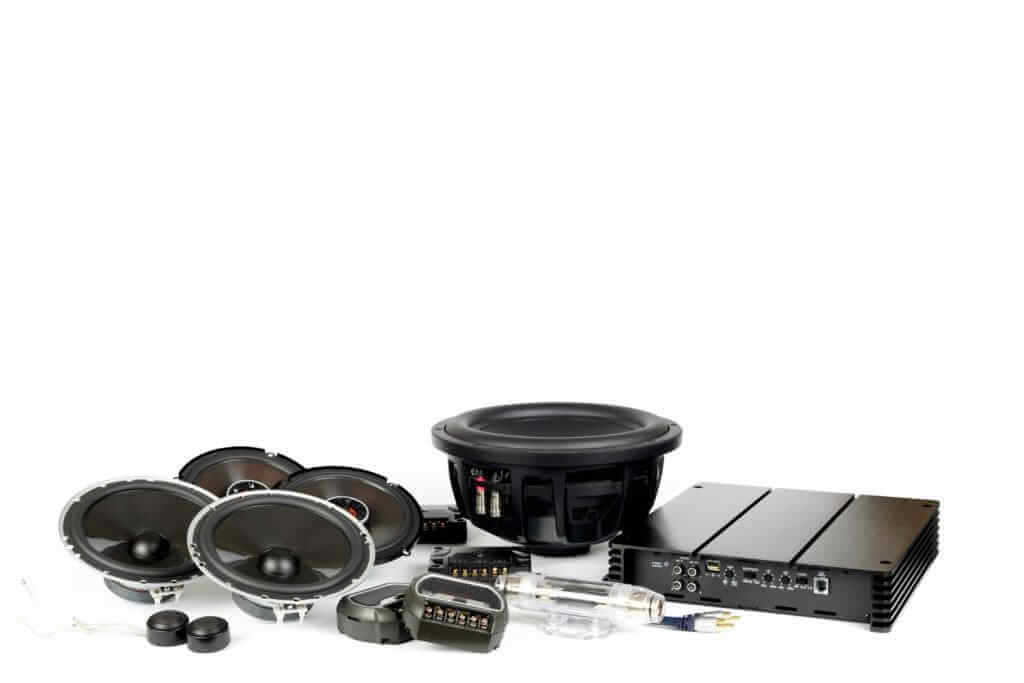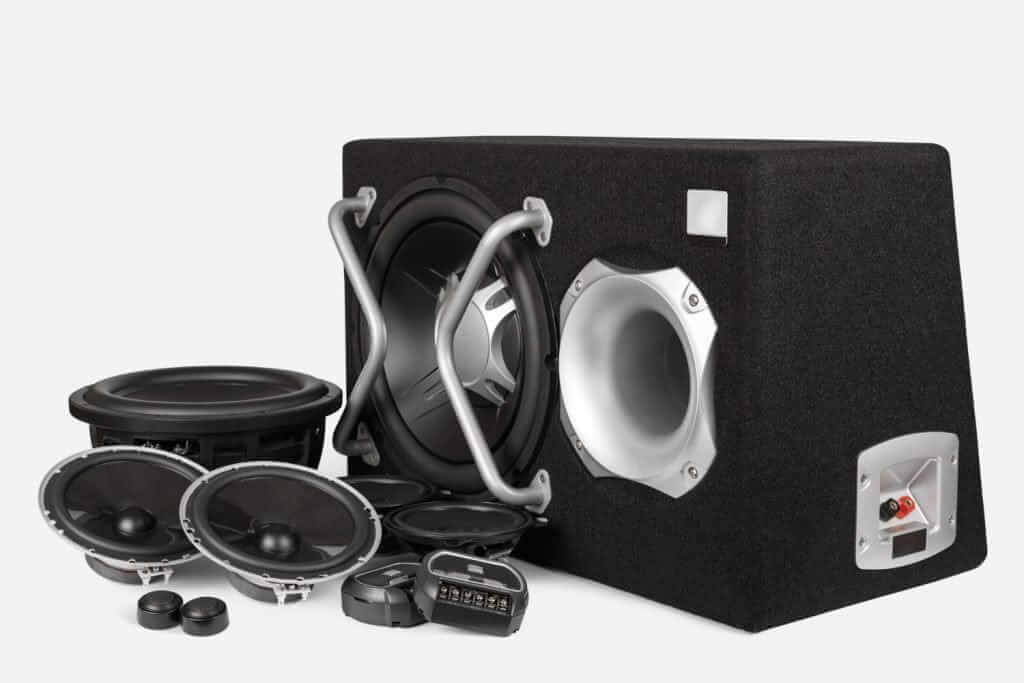Monoblock vs 4 Channel: Which Delivers Better Sound?
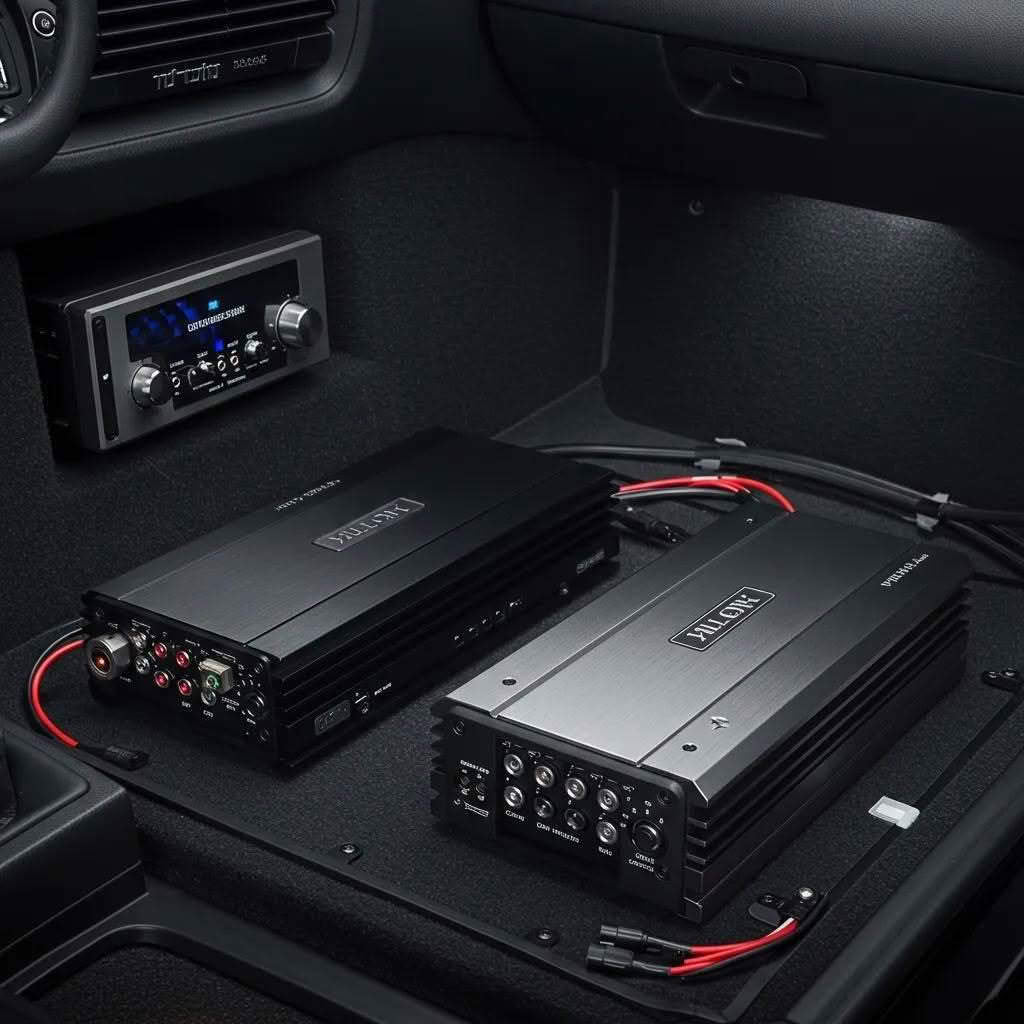
Monoblock vs 4 Channel Amplifier Sound Quality: Which Delivers Better Car Audio Performance?
Monoblock and 4-channel amplifiers serve different roles in car audio: a monoblock is a single-channel powerhouse tuned for low-frequency loads, while a 4-channel amp distributes power across multiple speakers for full-range staging. This article explains how each topology works, compares measurable and perceptual sound-quality differences, and gives practical wiring, bridging and system-design guidance to match gear with listening goals. You will learn how channel architecture, impedance handling, headroom and crossover strategies shape bass control and soundstage, when bridging is appropriate, and how to choose complementary power sources. The piece also maps real-world use cases — from SPL-focused single-sub builds to balanced four-speaker systems — and shows how high-discharge LTO SCiB lithium battery banks change performance outcomes in modern installs. Read on for side-by-side comparisons, quick decision tables, installer tips and concise FAQs to help you decide which amplifier type delivers the sound you want.
What Are the Key Differences Between Monoblock and 4 Channel Amplifiers?
A monoblock amplifier is a single-channel design that concentrates all power into one output to drive subwoofers at low impedances, while a 4-channel amplifier divides power across four outputs for front/rear or component speaker systems. The core differences are channel count, per-channel RMS ratings, impedance stability and typical thermal design, which directly affect headroom and sustained output. Below is a compact comparison to capture the principal attributes for quick decisions and snippet-style reference; the table highlights the functional trade-offs between dedicated sub power and multi-speaker versatility.
This comparison clarifies that channel architecture determines intended load and tuning approach, which leads into how a monoblock achieves its power delivery characteristics.
How Does a Monoblock Amplifier Work and What Is Its Purpose?

A monoblock amplifier dedicates its entire power supply and output stage to a single channel, optimizing transformer, capacitors and heatsinking for high current delivery. This topology lowers internal impedance, allows stable output at 1–2 ohms and prioritizes thermal management so the amp can sustain heavy bass transients without clipping. The result is greater headroom for short, powerful bursts and tighter low-frequency control when matched to the correct voice-coil and enclosure. Understanding this focused design helps explain why monoblocks excel at driving subwoofers in SPL and high-demand systems.
What Defines a 4 Channel Amplifier and Its Versatile Applications?
A 4-channel amplifier allocates power across four outputs, offering per-channel gain control and stereo separation for front and rear speaker arrays. Many 4-channel units can be bridged pairwise to drive a subwoofer or midbass, but bridging reduces impedance tolerance and changes thermal loading, so installers must check manufacturer specs and wiring. Because each channel has its own gain and often separate crossovers, 4-channel amps are ideal for active front-stage setups and component speaker pairs where imaging and mid/high fidelity matter. This balance of control and flexibility is why many balanced listening systems use 4-channel designs.
How Do Channel Configurations Affect Sound Quality in Car Audio Systems?
Channel count and configuration affect crosstalk, channel isolation, headroom and perceived fidelity through how power rails are partitioned and how signal paths are arranged. Better isolation reduces bleed between channels, which preserves imaging and stereo separation, while dedicated rails or larger supplies improve transient response and lower distortion under load. These electrical characteristics translate into practical listening differences: cleaner transients, tighter bass and more stable imaging when power is sufficient and channels are properly matched. These factors set up the direct sound-quality comparisons between monoblock and 4-channel amplifiers.
How Does Monoblock Amplifier Sound Quality Compare to 4 Channel Amplifiers?
Monoblocks generally deliver superior low-frequency control and higher sustained current capability for subwoofers, while 4-channel amplifiers provide better multi-driver balance and staging when paired with crossovers or DSP. Key trade-offs include focused power and thermal design versus channel flexibility and imaging — each yields different perceptual outcomes for SPL versus balanced listening. Below are concise pros and cons to target quick decisions and clarify why one topology might sound “better” depending on the goal.
- Monoblock Strengths: Dedicated power and thermal handling improve bass punch and headroom.
- 4-Channel Strengths: Per-channel control and crossovers enable precise imaging and mid/high clarity.
- Common Trade-offs: Cost, wiring complexity and bridging limits affect real-world performance.
These lists highlight where trade-offs occur and lead into why monoblocks control bass more effectively.
Why Is a Monoblock Amplifier Best for Deep, Controlled Bass?
A monoblock’s single-channel architecture supplies a concentrated power reservoir and low output impedance, enabling stable operation at 1Ω or lower and delivering strong current for transient peaks. This electrical stability reduces compression during heavy bass passages, preserves transient detail and minimizes midbass bloom that can muddy the soundstage. In listening terms, that translates to punchier, tighter bass with less audible clipping during hard hits. The dedicated supply design is the mechanical and electrical reason many SPL competitors and serious bass enthusiasts choose monoblocks.
How Does a 4 Channel Amplifier Deliver a Balanced and Detailed Soundstage?
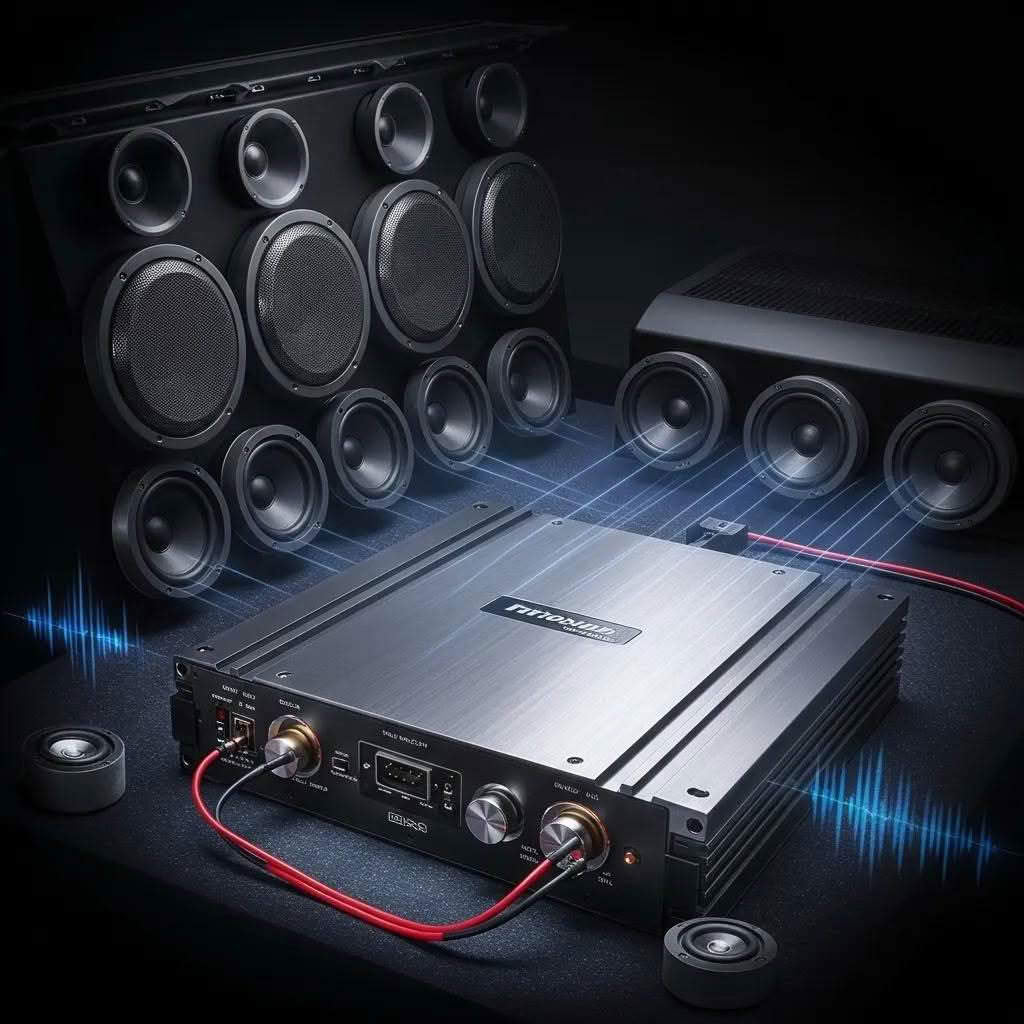
A 4-channel amp allows separate gain and crossover settings for front and rear speakers, which installers use to align levels, phase and time delays for a cohesive soundstage. When combined with DSP and active crossovers, each speaker receives optimally filtered power, improving imaging and mid/high resolution. The per-channel control also facilitates component speaker systems where tweeters and midranges need individual attention, resulting in clearer vocals and instrument separation. That per-channel fidelity is why many audiophiles favor 4-channel setups for everyday listening.
What Are the Sound Quality Trade-offs Between Both Amplifier Types?
Choosing between a monoblock and a 4-channel amp involves balancing cost, installation complexity and tuning flexibility against pure performance in a target frequency band. Monoblocks typically require simpler speaker wiring for subs but may necessitate additional amps for full-range systems, increasing overall system cost and alternator demand. Conversely, 4-channel amps reduce component count for full-range setups but can struggle with very low impedance sub loads without a dedicated sub amp. These trade-offs underscore the importance of matching amplifier topology to listening priorities.
When Should You Choose a Monoblock Amplifier vs a 4 Channel Amplifier for Your Car Audio?
Decide based on the primary audio goal: maximum subwoofer output and SPL focus point to a monoblock, while balanced imaging and full-range clarity point to a 4-channel amplifier. Consider installation complexity, available space and electrical system capacity when selecting gear. The table below is a concise decision checklist that maps common use cases to recommended amp types and brief notes for installers and DIYers.
After this decision aid, installers should plan wiring, grounding and alternator or battery support to prevent voltage sag during peaks.
Recommended wiring tips for installers and DIYers:
- Use correct gauge power wiring: Match cable size to amplifier current draw.
- Prioritize solid chassis grounding: Short, direct grounds reduce noise and improve stability.
- Verify bridging capability: Check amp specs before bridging for sub use.
These practical steps reduce unexpected distortion and lead into power-supply options that further stabilise performance. For systems where voltage stability and rapid discharge/recovery matter, Evolution Lithium supplies LTO SCiB lithium battery banks and both monoblock and 4-channel amplifier options suited to high-demand builds. Their LTO banks are custom-built with genuine SCiB cells and designed to support rapid charging, long cycle life and reduced voltage sag — useful in SPL and powerful amplifier setups where traditional batteries limit headroom.
How Do Evolution Lithium LTO Batteries Enhance Monoblock and 4 Channel Amplifier Performance?
Stable auxiliary power from LTO SCiB lithium batteries reduces voltage sag, supports peak currents and preserves dynamic range during heavy amplifier demands, improving perceived loudness and clarity for both monoblock and 4-channel systems. Evolution Lithium’s high-discharge LTO chemistry offers rapid recovery after peaks and consistent voltage under load, which directly translates into tighter bass and fewer clipped transients. The mapping table below links battery attributes to amplifier needs, clarifying why these banks are recommended for high-current audio systems.
LTO battery benefits in practice:
- Lower voltage sag during peaks: Preserves amplifier headroom.
- Fast charge/discharge cycles: Ready for repeated transients.
- Long cycle life: Better longevity for competition or heavy-use systems.
Example recommended pairings from Evolution Lithium include LTO banks sized to support monoblock-driven SPL builds and scaled banks for multi-amp systems; these combinations are intended to avoid bulk and voltage sag common with conventional batteries and to fit compact, powerful amplifier setups. Installers should consider alternator capacity and placement when integrating auxiliary LTO banks into any car audio system.
Why Is Stable Voltage Important for Amplifier Sound Quality?
Stable voltage maintains amplifier headroom and prevents early clipping, which preserves transient detail and lowers distortion during peaks. When supply voltage drops, amplifiers cannot reproduce the intended waveform amplitude, resulting in compressed dynamics and audible harshness. Keeping voltage steady benefits both dedicated sub amplifiers and multi-channel systems by ensuring consistent transient response. This technical connection explains why power-supply choices matter as much as amplifier topology.
How Do LTO Batteries Reduce Power Sag and Improve Dynamic Range?
LTO SCiB cells exhibit low internal resistance and high current discharge capability, allowing them to supply instantaneous peak currents without significant voltage drop and to recover rapidly for subsequent peaks. This electrical behavior reduces amplifier compression during bass hits and sustains clearer transients across the program material. In listening terms, that means stronger, more articulate bass and improved overall dynamic contrast. Evolution Lithium’s custom LTO banks target exactly these performance gains for car audio.
What Are the Recommended Battery and Amplifier Combinations from Evolution Lithium?
For SPL-focused monoblock systems, pair a high-discharge LTO bank sized for peak current support to maintain subheadroom during extended hits; for balanced four-channel systems, a moderately sized LTO bank provides voltage stability that improves imaging and prevents clipping under complex program material. Evolution Lithium positions its LTO SCiB banks as custom-built, high-discharge solutions that support rapid charging and long cycle life — practical advantages when your system draws heavy, repeated current. Installers should match Ah capacity and peak current rating to amplifier RMS and expected bursts.
What Are the Common Questions About Monoblock vs 4 Channel Amplifiers?
Below are concise, snippet-optimized answers to frequent decision and installation questions, crafted for quick reference and installer guidance.
How Do Monoblock Amplifiers Improve Sound Quality Compared to 4 Channel Amps?
Monoblocks concentrate all power into a single channel with lower internal impedance and heavier thermal design, improving headroom and transient delivery for subwoofers; this results in tighter, more controlled bass and reduced distortion at high output levels.
Can a 4 Channel Amplifier Be Bridged to Power a Subwoofer Effectively?
Yes, many 4-channel amps can be bridged pairwise to drive a sub, but bridging typically halves safe impedance tolerance and can increase thermal stress, so only bridge within the amplifier’s specified limits and confirm wiring and cooling are adequate.
Why Are Monoblock Amplifiers Typically More Expensive Than 4 Channel Models?
Monoblocks use larger power components, beefier transformers and targeted thermal design to handle high currents and low impedances, which increases manufacturing costs; that focused engineering yields superior sub performance but raises price compared to multi-channel, mass-market amps.
